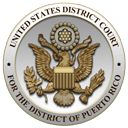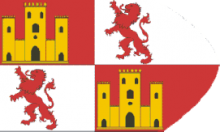|
Puerto Rico Flag |
This flag was the Flag of Castile and León from 1230 to 1516. Even though the Kingdoms of Castile and León had been united from time to time under the same monarch since 1037 (King Ferdinand I) until 1157, it was in 1230 when both kingdoms became definitively united under King Ferdinand III (Saint Ferdinand), at which time the quartered arms were devised. This flag became to a certain extent obsolete when the accession of the Catholic Monarchs in 1475 produced the union of the Castilian and Aragonese crowns, and definitively so in 1516, when King Charles I (Holy Roman Emperor Charles V) became the first King of all Spanish territories (Castile and León, Aragón and Navarre). This flag was not only the flag of the Kingdoms of Castile and León but of all Castile, formed (in 1492) by the Kingdoms of Castile, León and Murcia, the Basque provinces, the Canary Islands and some cities in the northern coast of Africa. The flag was carried by Christopher Columbus during his four voyages to the New World, and with it he claimed the New World for Her Catholic Majesty, Queen Isabella of Castile. Columbus first sighted the south coast of Puerto Rico ("Boriquén") on November 19, 1493 during his Second Voyage. Samuel Eliot Morison, in the Second Volume, "The Southern Voyages," of his monumental work "The European Discovery of America," writes that Columbus sailed along the southern coast of Puerto Rico all day on November 19, rounding Cabo Rojo on the morning of the 20th, steering northwest, looking for a place to land. Although several west coast towns claim that Columbus "surely" landed on their shores, the most probable landing was made at Añasco Bay on November 20, 1493. There, as Morison states, "the reefs ceased to mask the land, and the fleet sailed in deep water right up to the land. It was a perfect place for watering a large fleet, as not only the big Río Añasco rising in the mountains empties here, but a dozen other smaller streams of sweet water gave every vessel an opportunity to replenish her casks." |

